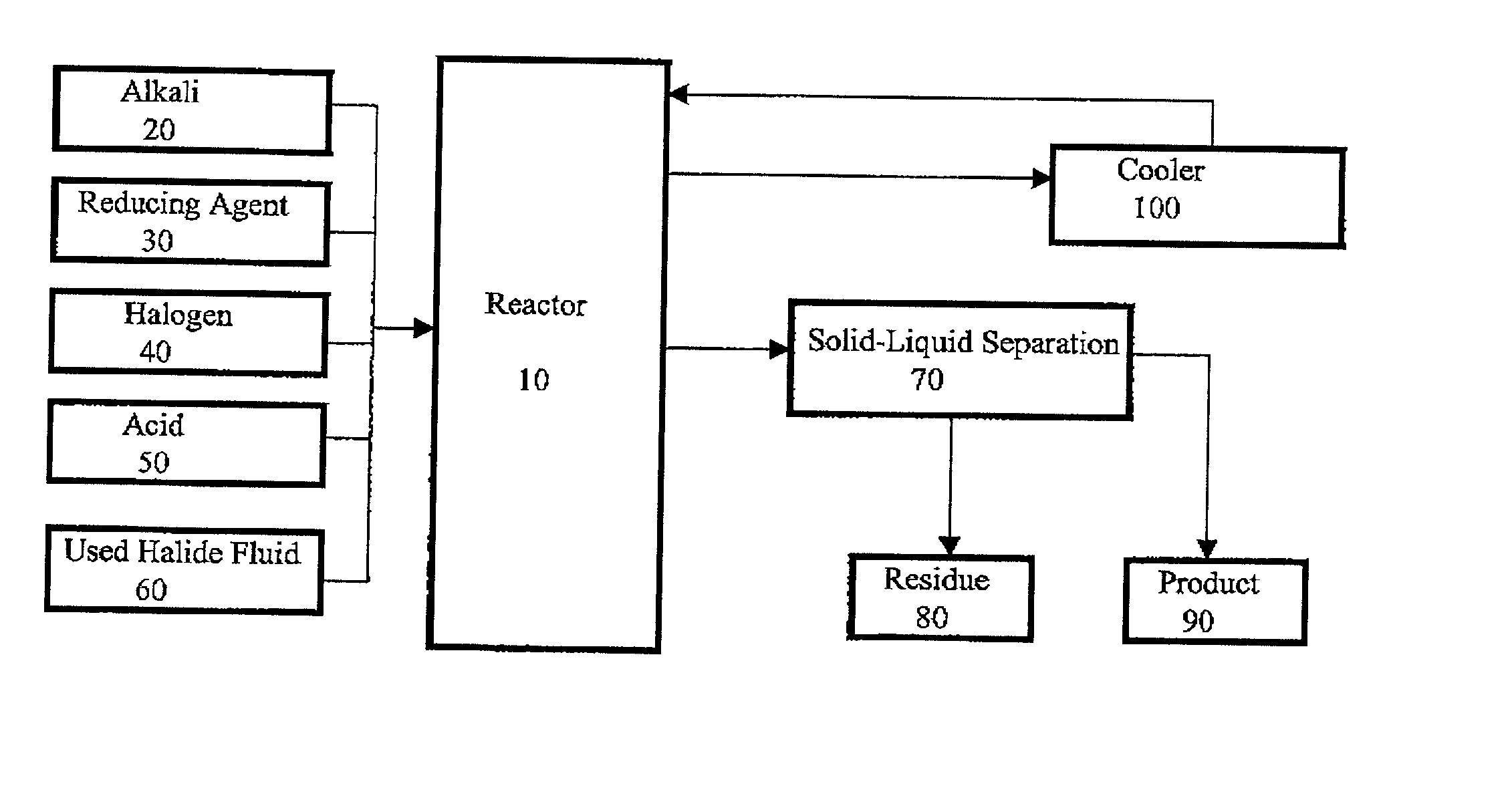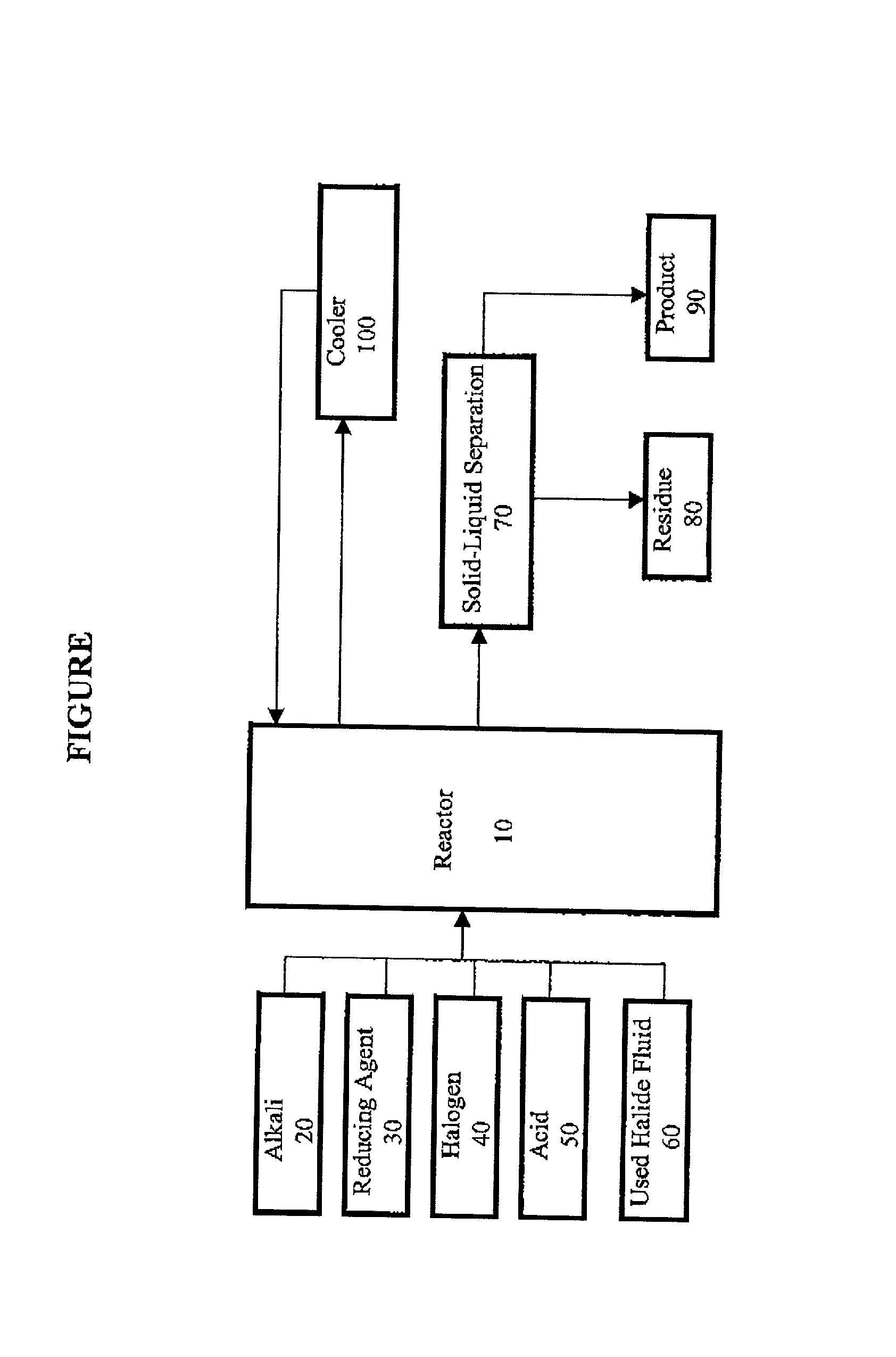Method for regeneration of used halide fluids
- Summary
- Abstract
- Description
- Claims
- Application Information
AI Technical Summary
Benefits of technology
Problems solved by technology
Method used
Image
Examples
example 1
[0048] A 500 ml sample of a recovered completion fluid from an oil well with density of 15.98 lb / gallon and iron content of 540 mg / kg was placed in a glass beaker and kept stirred using an electrically driven stirrer. To this 10 ml of liquid bromine was introduced. Using a hot plate the temperature of the reaction fluid was raised to 148.degree. F. (64.4.degree. C.). The solution was kept stirred at this temperature for 1 hour, which followed by addition of 2.9 g of p-formaldehyde as the reducing agent. Zinc oxide was added on as required basis to neutralize the excess acid of the fluid. The final fluid was filtered and analyzed for density and iron content, which respectively were determined to be 17.91 lb / gallon and 35 mg / kg.
example 2
[0049] A 500 ml sample of a recovered completion fluid from an oil well of Example 1 was placed in a glass beaker and kept stirred using a electrically driven stirrer. To this 20 ml of liquid bromine was introduced, while using a hot plate the temperature of the reaction solution was raised to 102.degree. F. (38.9.degree. C.). The reaction fluid was kept stirred at this temperature for 1 hour, which was followed by addition of 5.9 g of p-formaldehyde as the reducing agent. Zinc oxide was added on as required basis to neutralize the excess acidity of the reaction fluid. The final fluid was filtered and analyzed. The iron content of the final fluid was determined to be 40 mg / kg.
example 3
[0050] This test was conducted on a 500 ml sample of the same fluid as described in Example 1. In this case, 10 ml of liquid bromine was introduced to the fluid, while it was kept stirred and using a hot plate the temperature of the reaction solution was raised to 80.degree. F. (26.7.degree. C.). The reaction fluid was kept stirred at this temperature for 1 hour, which was followed by addition of 13 g of metallic zinc as the reducing agent. In this test no basic material was added for the neutralization of excess acid. The final fluid was filtered and analyzed. The density and iron content of the final product was determined to be 19.95 lb / gallon and 32 mg / kg, respectively.
PUM
| Property | Measurement | Unit |
|---|---|---|
| Angle | aaaaa | aaaaa |
| Density | aaaaa | aaaaa |
| Density | aaaaa | aaaaa |
Abstract
Description
Claims
Application Information
 Login to View More
Login to View More - R&D
- Intellectual Property
- Life Sciences
- Materials
- Tech Scout
- Unparalleled Data Quality
- Higher Quality Content
- 60% Fewer Hallucinations
Browse by: Latest US Patents, China's latest patents, Technical Efficacy Thesaurus, Application Domain, Technology Topic, Popular Technical Reports.
© 2025 PatSnap. All rights reserved.Legal|Privacy policy|Modern Slavery Act Transparency Statement|Sitemap|About US| Contact US: help@patsnap.com


